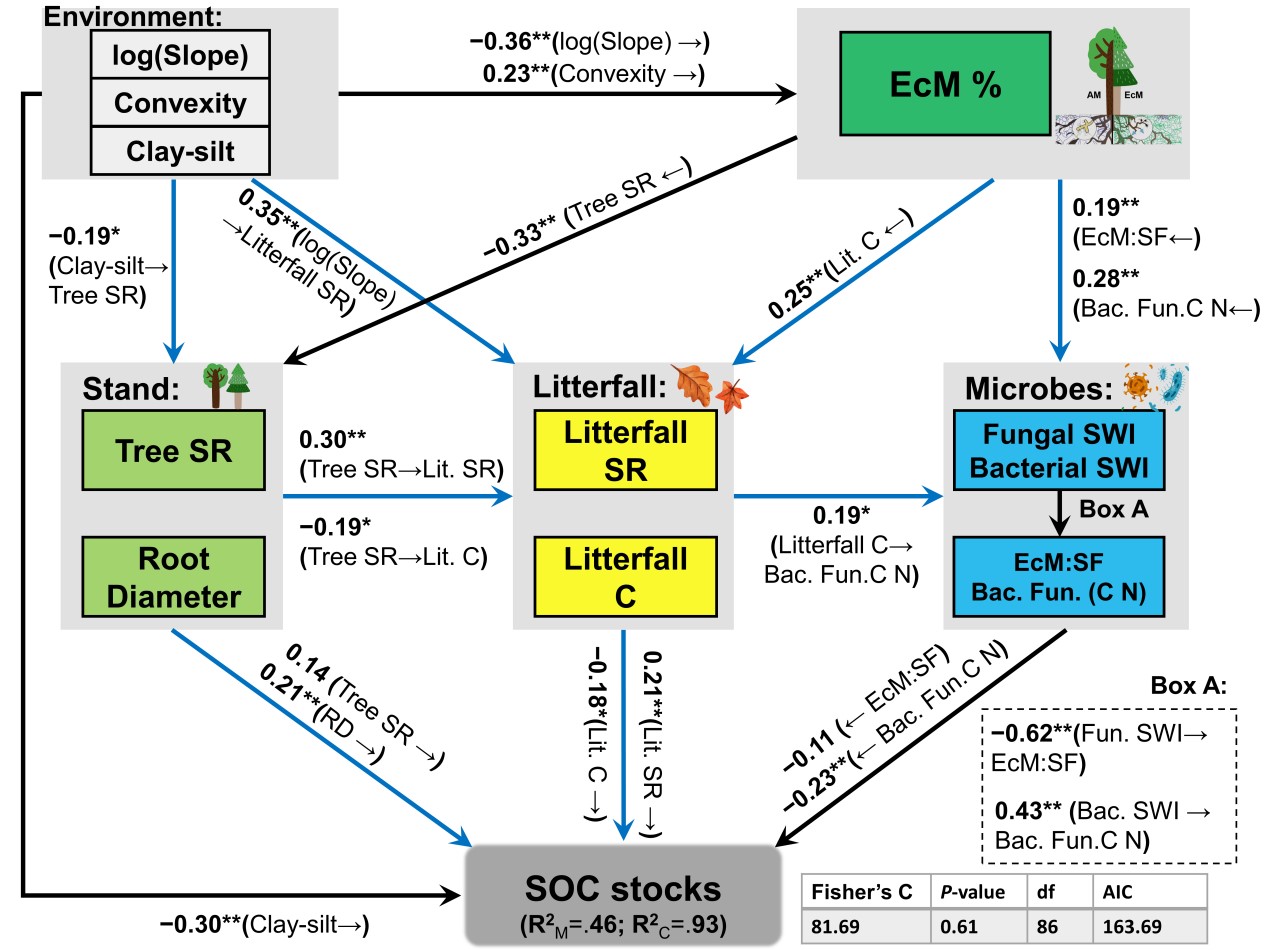Mycorrhizal Fungi's Role in Forest Soil Carbon Storage Unveiled
New research sheds light on how different types of mycorrhizal fungi associated with trees influence soil organic carbon (SOC) storage in temperate forests. This work, conducted by researchers from the Institute of Applied Ecology at the Chinese Academy of Sciences, was published in the journal Functional Ecology.
In many temperate forests, trees form symbiotic associations—mutually beneficial partnerships—with two major fungal types: arbuscular mycorrhizal (AM) fungi and ectomycorrhizal (EcM) fungi. It is known that these fungal partnerships influence the levels of SOC, however, the exact local-scale processes had not been fully understood.
The researchers conducted their study on a 25-hectare broad-leaved Korean pine forest in Changbai Mountain.Key findings showed vegetation traits, including plant diversity and root structure, explained 45% of SOC variation—nearly double the influence of soil microbes (26%) and physical factors such as soil composition (20%). Specifically, SOC storage increased in areas with richer plant species, diverse leaf litter inputs (litter refers to naturally fallen leaves and branches), and larger tree roots, but declined in soils with higher clay and silt content.
Additionally, forest areas where EcM-associated trees prevail tended to have reduced SOC, a trend that might be due to lower tree species diversity, excessive carbon-rich leaf litter accumulation, and distinctly structured soil microbial communities.
These insights highlight the significant role of tree mycorrhizal associations in regulating the complex interactions between aboveground and belowground systems. Understanding these relationships offers a new perspective on the biological mechanisms governing SOC accumulation in forest ecosystems. This suggests that forest management strategies could enhance soil carbon storage by prioritizing mycorrhizal community dynamics.

Fig. 1. Influence of tree mycorrhizal types, plant, and microbial community attributes on soil organic carbon storage (ZHANG Meixu).



